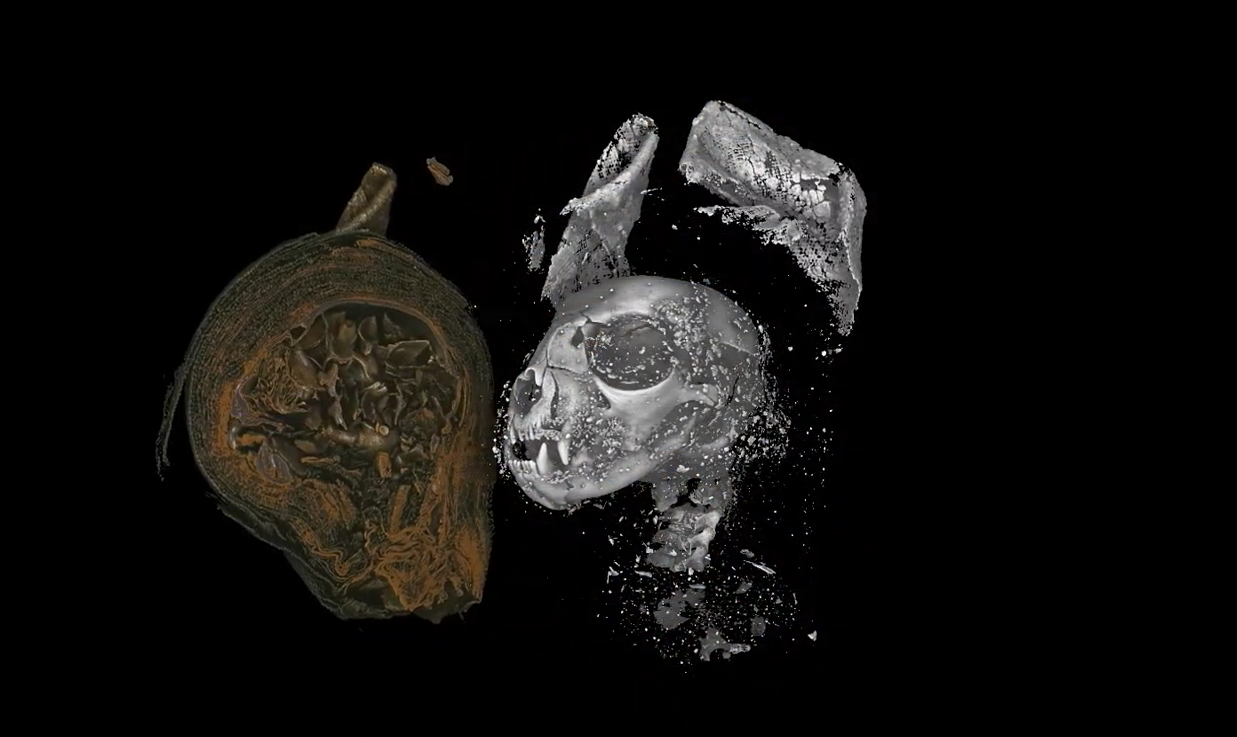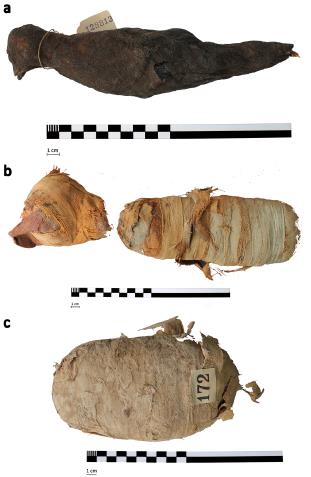Mummified kitten 'strangled' to death before being offered to the gods, new 3D scans reveal
Ancient Egyptians mummified tens of millions of animals over about 1,000 years. Sometimes, it got messy.

Two thousand years ago, an Egyptian priest picked up a baby cobra by its tail, whipped it through the air and slapped it hard against the ground. Thwack! As the snake's skull and spine cracked, its brief and uncomfortable life was over. But its usefulness to the Egyptians was just beginning.
The young snake would soon become an animal mummy — just one of millions of linen-bound corpses that were dressed, blessed and offered to the gods between roughly 700 B.C. and A.D. 300. While the practice was far more pervasive than human mummification (As many as 70 million animal mummies may have been created during this period, according to the University of Manchester), many details remain a mystery. (Studying a specimen, unfortunately, often involves destroying its brittle remains.)
Now, a new study published today (Aug. 20) in the journal Scientific Reports unwraps the proverbial bandages a little bit further. Using a non-invasive imaging technique called X-ray micro CT scanning, which involves taking thousands of rapid-fire X-ray scans of an object on a rotating platform, researchers have created 3D digital images of three ancient animal mummies — a cat, a bird and the aforementioned cobra — revealing how the creatures lived and died in unprecedented detail.
"Using micro CT we can effectively carry out a post-mortem on these animals, more than 2,000 years after they died in ancient Egypt," lead study author Richard Johnston, an associate professor in the Materials Research Centre at Swansea University in the United Kingdom, said in a statement. "With a resolution up to 100 times higher than a medical CT scan, we were able to piece together… possible causes of death."
Unlike human mummification, which was meant to ensure a person's rebirth in the afterlife, animals were mummified primarily to become votive offerings to the gods, similar to how candles may be offered in churches today, the researchers wrote. The practice spawned a thriving industry. Entire farms were devoted to breeding the cats, dogs, birds and reptiles that were destined for mummification, while entire cemeteries were erected to house their remains.
The new micro CT study reveals how some of those ill-fated animals were treated during their time among the living. With their scans, the team peered directly through the mummies' bandages, exposing the gnarled bones within. The cat, for example, was found to be a kitten younger than 5 months old, based on the development of its teeth and bones. Breaks around the feline's neck suggest it was strangled to death before its mummification, according to the study.
The cobra, which was also a juvenile, met a similarly crushing end, the team found. Fractures in its skull and spine suggested that the cobra had been grabbed by the tail and killed in a "whipping" motion shortly before being mummified; after this, the snake's jaw was broken and its mouth stuffed with some sort of dirt or clay — possibly natron, a natural sodium carbonate mixture often used to dehydrate corpses during mummification, the researchers said. The snake was also dehydrated in life, leading to calcium deposits in its kidneys and the onset of gout. It's likely the young snake was intentionally deprived of water in captivity, the team wrote.
Sign up for the Live Science daily newsletter now
Get the world’s most fascinating discoveries delivered straight to your inbox.
While the bird's skeleton was too damaged to reveal much, the team measured its bones and concluded it most closely resembled a Eurasian kestrel, one of the birds of prey associated with the gods Horus, Sokar and Re, the team wrote. It's unclear whether the bird was captured from the wild or bred with mummification in mind.
Ultimately, the researchers wrote, this study shows that micro CT scanning can reveal valuable insights about the past without damaging the brittle specimens on the lab bench. But it also reminds us that, even in a culture where certain animals were considered sacred messengers of the gods, humans' relationship with nature has more than a few fractures.

Originally published on Live Science.

Brandon is the space/physics editor at Live Science. His writing has appeared in The Washington Post, Reader's Digest, CBS.com, the Richard Dawkins Foundation website and other outlets. He holds a bachelor's degree in creative writing from the University of Arizona, with minors in journalism and media arts. He enjoys writing most about space, geoscience and the mysteries of the universe.









